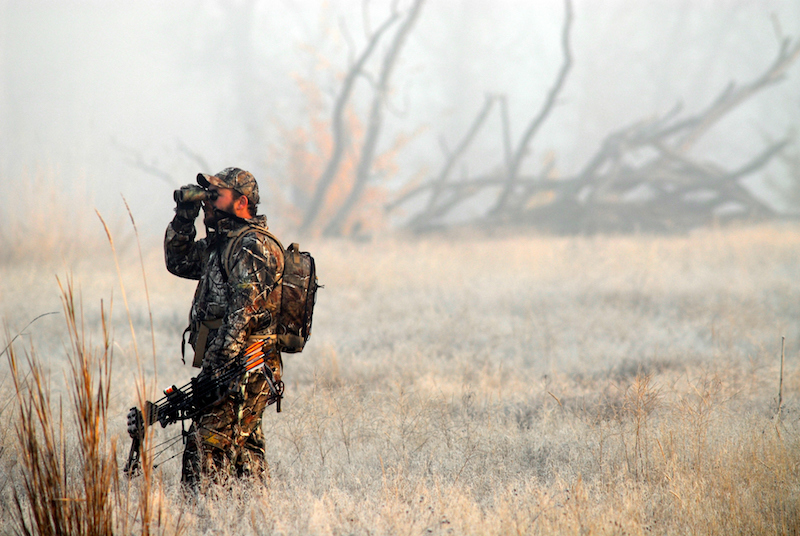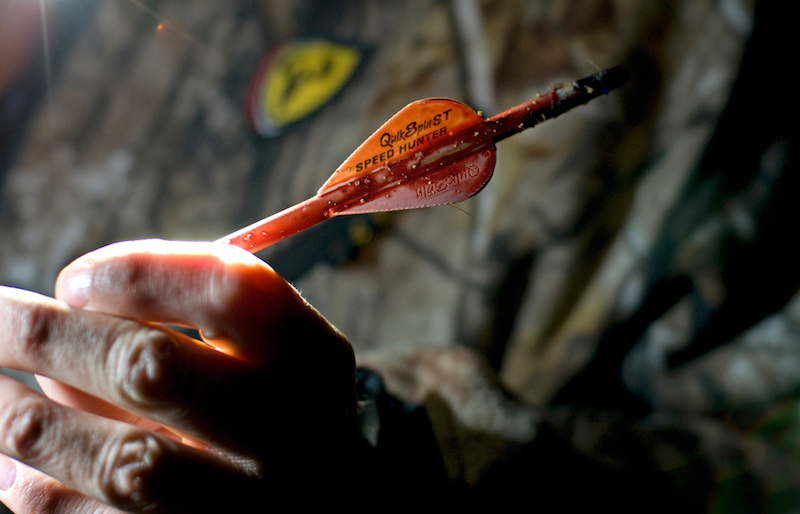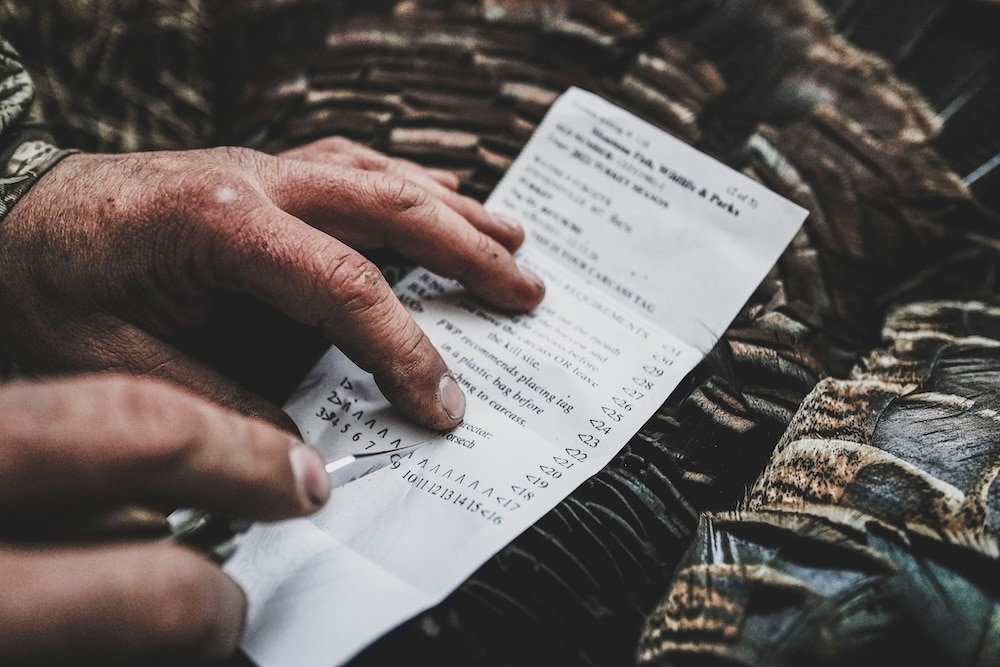Releasing an arrow at a big-game animal is usually the culmination of months of scouting, target shooting, physical conditioning and preparation. In some cases, it could be the shot of a lifetime.
Despite all the months of preparation, the seconds following the shot may be even more critical to your success. They could mean the difference between recovering your trophy and a lifetime of wondering “what if?”

Binoculars will help you keep track of the deer once it’s been hit. Photo Credit: John Hafner
At that critical moment, adrenaline is flowing and excitement is high. But archers need to reign in the emotions to make a good shot and then keep a cool head to assess the results of that shot.
The moment you release that arrow, your eyes and ears must gather valuable information to help you determine how to proceed. Watch where the arrow strikes the animal and pay attention to how your quarry reacts. If your buck mule kicks, it’s money. That usually indicates a heart shot, and it’s likely your trophy won’t go far before piling up. Similarly, if the critter tears off on a low run, that usually means a lethal hit. However, if the animal hunches up, you may have hit guts. A deer that snorts and high-bounds it out of there probably indicates a miss (but follow up anyway).
Watch the animal until it’s out of sight. If it falls within sight, the decision-making process is easy. Even so, give the animal time. It may not be dead. Binoculars can help you determine if your animal is down for good or if it will need a follow-up shot. Always expect the animal to be alive as you approach, and be ready to shoot.
More than likely, however, your quarry will run out of sight. Note the spot where the animal was standing when you shot and try to pinpoint where it disappeared from view. You’ll be off to a good start in the tracking process.
Your eyes can tell you a lot about the result of your shot, but use your ears as well. A loud crack upon impact may mean you’ve hit the shoulder blade. Although this likely means you won’t get a pass-through, the result may still be a dead animal. A better sound is the crash of a deer falling to the ground after it disappears from sight. Usually the site of this sound is where you’ll find your animal, expired. At the very least, you may be able to hear the direction of travel after your trophy disappears from sight.
As soon as the animal is out of visual and auditory range, take a deep breath, compose yourself and try to remember what you saw and heard. Unless your deer is dead within sight, wait at least 30 minutes before trying to recover it.

Examine the arrow and the color of the blood to determine where you’ve hit the animal. Photo Credit: John Hafner
When it’s time to take up the trail, visit the spot where your deer was standing when you shot. Look for blood, hair, disturbed leaves, tracks and your arrow. Examine the arrow. If it’s covered in bright-red blood, you’ve likely made a lethal heart shot. Frothy pink or red blood means a lung shot. Dark-red blood may indicate a liver shot. Although a liver shot is fatal, it may take hours for your deer to expire. Brown or green chunks with a foul odor indicates a gut shot. Look for hair as well. White hair could mean a low, grazing shot. A large amount of hair and little or no blood may also indicate a grazing shot.
Use the clues left by blood and hair to determine where you may have hit the deer. If it looks like a heart or lung shot, your deer should be dead by the time you climb down from your stand. If it’s a liver, gut or muscle shot, you will probably need to give the animal more time, unless snow or rain threatens to ruin your blood trail.
Entire books have been written on the art of blood trailing, but this article by the QDMA can give you further insights into where you might have hit your deer and how to proceed based on the hit.
If all goes well, you will recover your deer after a short tracking job. Whether you high-five a buddy or say a silent prayer, that special moment is yours.

When you’ve found the deer, tag it properly and take your field picture. Photo Credit: John Hafner
Once you’ve recovered your deer, fill out your tag and affix it to the animal,if required. This is a good time to get some field photos as well before rigor mortis sets in. (And field shots always look better than tailgate shots anyway).
In many cases, hunters field-dress their deer to help the animal cool and to reduce the weight of the carcass, although some hunters remove the whole carcass from the field.
If you’ve never field-dressed a deer or need a refresher, this article from Bowhunting 360 can help.
Now it’s time to remove your deer from the field. If you can drive a pickup or ATV to the kill site, this task is ridiculously simple. Make sure you’re not tearing up a farmer’s field or driving where you shouldn’t be.
If you’re on public land or back in the thick stuff, you might have to get your deer out with sweat equity. A deer cart can make the task easier, although it may be difficult to traverse rough terrain or thick brush. A sled can help your deer slide more easily. For more tips on getting your deer out of the woods, check out this article.
When all else fails, grab an antler and start dragging. Just don’t overdo it in the process. It’s not every day you get to put your tag on a deer. Enjoy your time with the animal and the reflections of the hunt.